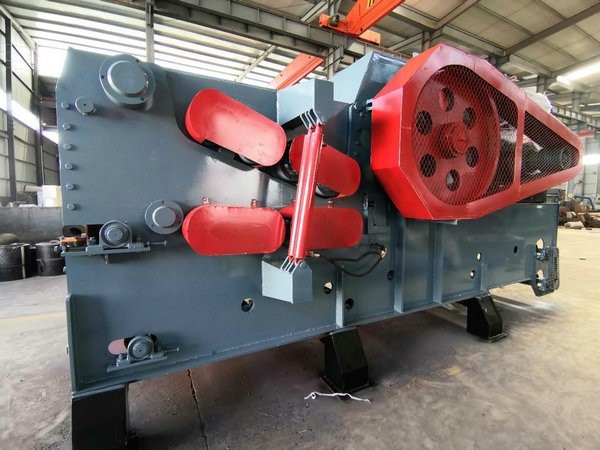The operation of a Low Cost wood chipper machine relies on hydraulic oil, which is consumed during use. At this point, we need to consider replacing the hydraulic oil. So, how should the hydraulic oil of the wood cutting machine be installed? The following is the relevant process.
1. Stop the machine and cut off the power supply to the electrical system, and wait for the oil temperature to decrease.
2. Slowly loosen the air filter of the upper fuel inlet flange assembly of the wood chipper machine oil tank, reduce the air pressure stored in the tank, and remove the air filter.

3. Prepare a container larger than 800L and use a filter car to extract hydraulic oil through the air filter hole.
4. Open the drain plug at the bottom of the Low Cost wood chipper machine oil tank and completely drain the remaining oil.
5. Remove the fuel tank cleaning cover flange.
6. Remove the rubber hose and flange from the oil suction port of the wood chipper machine, and remove the oil suction filter.
7. Clean the interior of the fuel tank.
8. Clean the oil suction filter and emphasize new installation.
Now. There are many methods to deal with waste wood. For example, a Low Cost wood chipper machine can process not only waste wood but also tree branches and twigs. Its output can reach 0.8 to 15 tons per hour. The main features of this machine are high efficiency and simple operation. The processed materials have a wide range of uses. In addition to being used as fuel, they can also be used to protect the roots of flowers and trees in flower shops. In winter, they can be used as insulation to ensure that flowers and trees survive the winter. Other sawdust mixed with manure can be used as fertilizer after fermentation, which is nutritious, environmentally friendly, and can be used as a simple soilless cultivation material.
Wood is fed from the feeding port of the Low Cost wood chipper machine. When the wood comes into contact with the cutting blade, it is cut by the high-speed rotation of the cutting blade. The cut wood chips are sent out of the cutting chamber through the high-speed steam flow generated by the blade on the cutting blade.

 Address:Zibo, Shandong
Address:Zibo, Shandong WhatsApp:+8615805335335
WhatsApp:+8615805335335 Wechat: +8615805335335
Wechat: +8615805335335  E-mail:zs@sdsmachinery.com
E-mail:zs@sdsmachinery.com